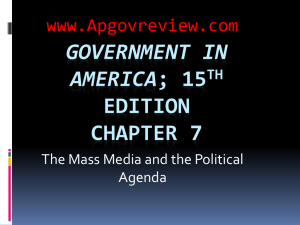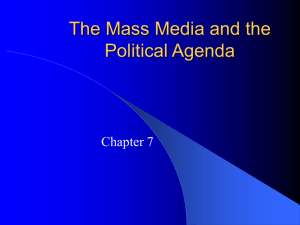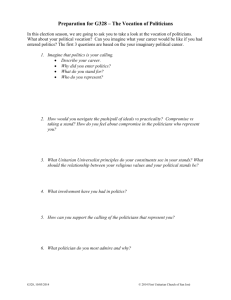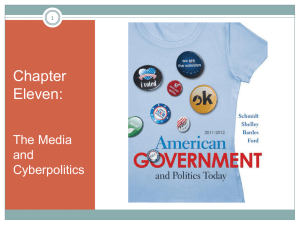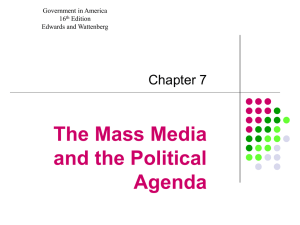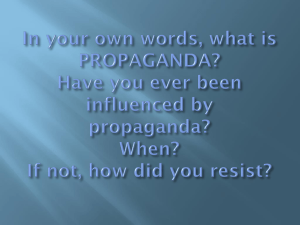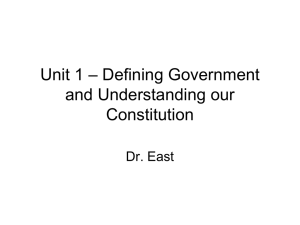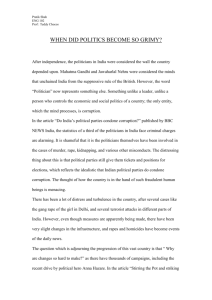Ch 7 Media
advertisement
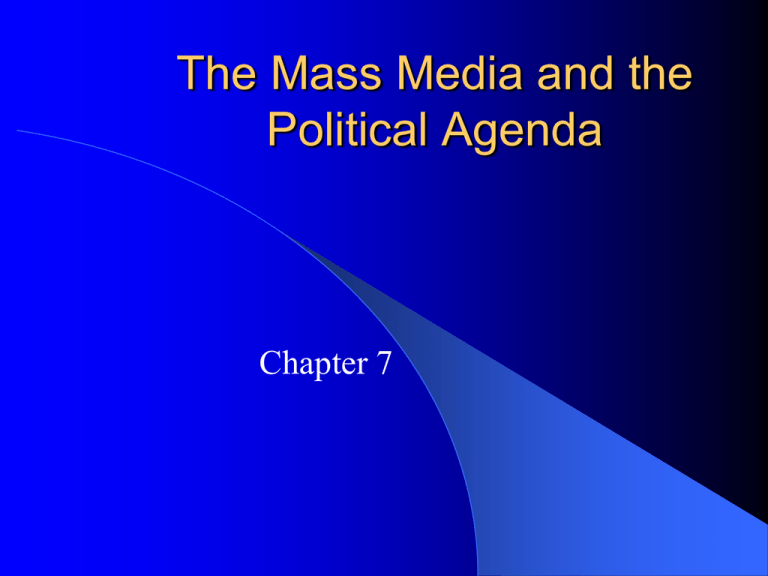
The Mass Media and the Political Agenda Chapter 7 Introduction Mass Media: – Television, radio, newspapers, magazines, the Internet and other means of popular communication. High-tech politics: – A politics in which the behavior of citizens and policymakers and the political agenda itself are increasingly shaped by technology. The Mass Media Today – 60% of presidential campaign spending is to buy TV ads – Image making / news management is important, especially for presidents – In the past, politicians worked closely with the media; today they often oppose each other The Development of Media Politics – The news media wasn’t always so important. – Press Conferences: meetings of public officials with reporters - Roosevelt was first to use these. – Traditionally press favored politicians and limited coverage to convey facts rather than interpret them – Today they often oppose each other The Development of Media Politics – Watergate and the Vietnam War changed the government’s relationship with the press—the press became more suspicious – Investigative Journalism: the use of in-depth reporting to unearth scandals, scams & schemes putting reporters & politicians opposite each other. – News is more negative today The Development of Media Politics The Print Media – Newspapers and magazines – Only a few corporations own all news outlets in the U.S. (print, radio and t.v.) – Newspaper circulation has been declining. – Newspaper readers tend to be politically informed and active The Development of Media Politics Figure 7.1 The Development of Media Politics The Broadcast Media – Television and radio – Brought government and politics into people’s homes. – Made the politicians more aware of their appearance and mannerisms. – Television is the principal source of news for most Americans, and most believable. Narrowcasting Narrowcasting allows viewers to select what information they want to see and avoid all else Cable t.v. encourages narrowcasting Critics fear the trend will lead to a less informed electorate Reporting the News Newscasting seeks high ratings and profits This can be detrimental for political agendas AND for informing Americans about politics Sensational, unusual and negative events receive more attention than the everyday This leads public to think politics is scandalous and to distrust politicians Reporting the News Finding the News – Beats: Most journalists cover a specific location, such as Congress or the White House. This set-up gives politicians more control of information going out. – Trial Balloons: An intentional news leak for the purpose of assessing the political reaction. – Reporters and their sources depend on each other - one for stories, the other to get them out Reporting the News Presenting the News – Superficial describes most news coverage today – Sound Bytes: Short video clips of approximately 15 seconds. Figure 7.2 Reporting the News Bias in the News – Many people believe the news favors one point of view over another. – More reporters say they are liberal than conservative – Bias is NOT apparent so much in the way news is presented but is a factor in what is reported and what is NOT – News is biased towards what will draw the largest audience. The News and Public Opinion The mass media have a huge influence over the public agenda—the issues citizens want government to address News organizations can define which are the most pressing political issues and determine political priorities depending on their coverage of stories. The Media’s Agenda-Setting Function Policy Agenda: – The issues that attract the serious attention of elected officials and other people actively involved in politics at the time. Policy Entrepreneurs: – People who invest their political “capital” in an issue. – All depend on good images and good will. Understanding the Mass Media The Media and the Scope of Government – The media acts as a watchdog to force government to answer to the public – But they discourage Americans from thinking critically/deeply about politics Quick Write Prompt Has the quality of news coverage declined? (A)Discuss TWO characteristics of news coverage today that indicate a decline in news quality. (B) Do you agree that the above demonstrate a decline in news quality? Defend your position.
